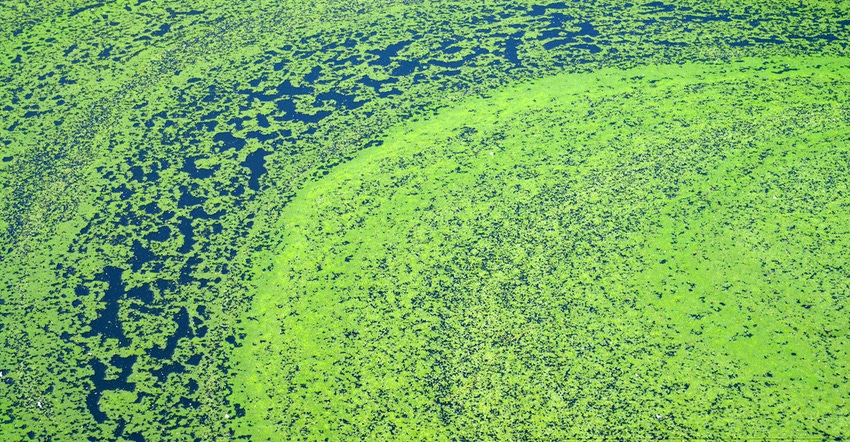September 18, 2020

The University of Illinois will receive nearly $1 million to research how to control and prevent harmful algal blooms (HABs).
HABs are overgrowths of algae in water that have the potential to harm human health and aquatic ecosystems. There are several factors that can cause HABs to develop, including excess nitrogen and phosphorous in waterways.
Specifically, the $999,377 grant from the EPA to the University of Illinois will fund research into subsurface drainage systems that can deliver large quantities of nutrients from agricultural fields to receiving watersheds, potentially leading to harmful algal blooms.
“Harmful algal blooms are a serious and persistent problem across all 50 states that can have severe impacts on human health, the environment, and the economy,” said EPA Administrator Andrew Wheeler. “By expanding our knowledge of how to control and prevent the occurrence of these blooms, we can better protect our watersheds—especially our drinking water sources and recreational waters.”
“EPA proudly supports the efforts of the University of Illinois to develop innovative approaches to combat excess nutrient runoff,” said Regional Administrator Kurt Thiede. “This work is vital in improving our ability to control harmful algal blooms and protect water resources for all residents.”
The project, “Development of a Novel Bioreactor and Biochar-Sorption-Channel (B2) Treatment System to Capture and Recover Nutrients from Tile Drainage,” will produce and scale up an innovative treatment system to effectively capture excess nutrients from subsurface drainage in agricultural fields, recycle the nutrient-captured biochar as a slow-release fertilizer, and keep nutrients in the closed agricultural loop. The project is expected to offer an innovative, feasible, and cost-effective practice to mitigate the loading of excess nutrients into watersheds from agricultural fields, improve water quality, and thereby diminish the occurrence of HABs.
“This process has the potential to be a win-win for agriculture, not only by reducing the nutrient run-off that leads to harmful algal blooms but also by capturing those nutrients and routing them back into fields, leading to increased yields,” said Illinois Sustainable Technology Center director Kevin C OBrien. “It’s our goal to put cost-effective, feasible tools for sustainability in farmers’ hands.”
Seven grants totaling more than $6 million were awarded to institutions to address the environmental challenges posed by HABs. Through the development of new technologies and the optimization of existing technologies and best management practices, these projects will assist in reducing excess nutrients that enter the nation’s waterways and support EPA’s goal to reduce the occurrence of HABs across the United States.
Preventing and mitigating excess nutrients in our waters, and the HABs that they can create is one of EPA’s highest water quality priorities. In 2020 alone, EPA has awarded Small Business Innovation Research funding to companies developing technologies to better detect HABs, released draft nutrient criteria for lakes and reservoirs, and announced an award of more than $2 million in funding to help states implement plans to that reduce excess nutrients and improve water quality in the Mississippi River/Atchafalaya River Basin. Today’s award marks the largest research grant to date to support a nation-wide effort to prevent and control HABs.
Source: EPA, which is solely responsible for the information provided and is wholly owned by the source. Informa Business Media and all its subsidiaries are not responsible for any of the content contained in this information asset.
Read more about:
ResearchYou May Also Like




